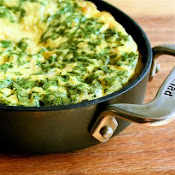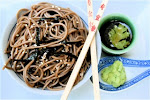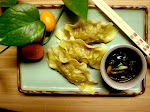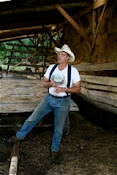 A month ago, my friend and I enjoyed a delectable cheese plate at Tinto, Jose Garces’ Basque region tapas restaurant. Drizzled with Acacia honey and sprinkled with bee pollen and espelette, a wedge of Petit Basque paired with a sliver of quince membrillo began the evening most memorably. Tinto offers a variety of Basque region cheeses, each served with these same four accoutrements.
A month ago, my friend and I enjoyed a delectable cheese plate at Tinto, Jose Garces’ Basque region tapas restaurant. Drizzled with Acacia honey and sprinkled with bee pollen and espelette, a wedge of Petit Basque paired with a sliver of quince membrillo began the evening most memorably. Tinto offers a variety of Basque region cheeses, each served with these same four accoutrements.Last week, celebrating two friends’ recent move to the East Coast from San Diego, I purchased a selection of Spanish and French cheeses, mostly from the Basque Country, as well as a jar of Acacia honey and a small canister of espelette from Di Bruno Bros. While membrillo can be made at home, most specialty shops carry it, and bee pollen can be found at health food stores such as Essene or Whole Foods Market. With a light salad, a fresh baguette and a few slices of prosciutto, these cheeses made a perfect dinner.
 A selection of Spanish and French cheeses, from left to right:
A selection of Spanish and French cheeses, from left to right:Blue de Basque: A sheep's milk blue cheese made in the French Basque region. Milder and less salty than other blue cheeses, this cheese is semi-firm and slightly crumbly.
Monte Enebro: Pasteurized goat’s milk produced in Avila, west of Madrid. Semi-soft, and chalky-white, this cheese tastes tangy, with a distinct goat flavors.
Garrotxa: A pasteurized goat’s milk cheese indigenous to Catalonia, but produced throughout northeastern Spain. With a firm but moist and smooth paste, Garrotxa tastes herby, tangy and nutty.
Petit Basque: A raw sheep’s milk cheese with a creamy body and nutty taste, made in the French Pyrenees.
La Serena: A raw sheep’s milk cheese produced in Western Spain, in the community of La Serena and surrounding areas. Touted “one of the world’s greatest soft sheep’s milk cheeses,” by Max McCalman, author of The Cheese Plate (Random House, 2002). La Serena, at its peak, it is soft and spreadable, tasting rich, buttery and creamy. If purchased as a whole cylinder, the top can be cut off and the inside enjoyed by scooping out the pungent and grassy-tasting paste.
Idiazabal: A raw sheep’s milk cheese produced in the Spanish Basque Country. Usually smoked, Idiazabal has a hard, orange-brown exterior color, with a buttery and nutty flavor. Similar to Roncal, Manchego & Zamorano, this cheese pairs particularly well with quince paste.
Pictured below: The bar at Tinto, taken by Jared Gruenwald (The Bulletin). Read full Tinto review here.



































































































































